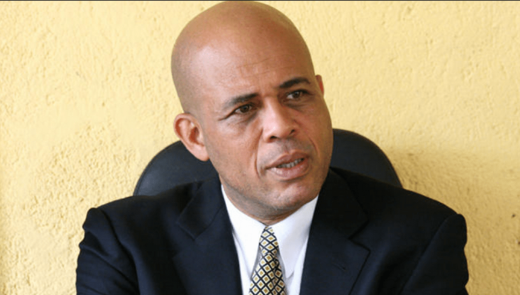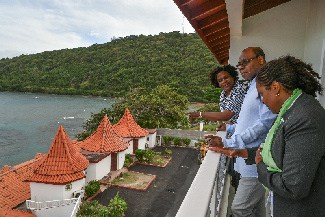100 Days into Michel Martelly’s Presidency: Survey Reveals Conflicts of Camp Closure


Port-au-Prince, Haiti — On the eve of the hundredth day of President Michel Martelly’s presidency, a survey conducted in six displacement camps scheduled to close under his 100-day plan shows that the government’s closure of camps so far has resulted in unlawful, violent evictions of displaced communities in direct contrast to the durable solutions touted under the plan.
The survey, conducted by the Center for Law and Global Justice (CLGJ) at the University of San Francisco School of Law, the Institute for Justice & Democracy in Haiti (IJDH), and the Bureau des Avocats Internationaux (BAI), interviewed 150 households from August 3 to August 10, 2011, on the government’s implementation of the housing plan, including camp closures, residents’ access to information and input on the plan, and the provision of housing assistance.
President Martelly, who took office on May 14, 2011, presented the camp closure plan as the pilot project for closing camps and moving victims of last year’s devastating earthquake into permanent housing. The plan pays displaced residents a fixed amount to move out of camps into their pre-earthquake homes, the majority of which are currently uninhabitable due to earthquake damage. The six camps slated for closure within the first 100 days of his presidency are: Primature, Place Saint-Pierre, Place Boyer, Place Canapé-Vert, Maïs Gaté, and Stade Sylvio Cator.
The Interim Haiti Recovery Commission pledged $78 million this week to fund President Martelly’s housing plan. The plan could have significant benefits for displaced communities, assuming the government keeps its promises made in the plan. While implementation in accordance with the stated plan has yet to begin, two of the six camps have already begun the closure process. Stade Sylvio Cator was completely closed and all residents evicted last month by the government in direct contrast to the “durable solutions” and “improved living conditions” promised in the Martelly plan.
The families living at Stade Sylvio Cator were unlawfully evicted by the Mayor of Port-au-Prince and Haitian National Police without a court order, as required under Haitian law. The police destroyed residents’ tents and belongings, prompting condemnation from the United Nations Office of the High Commissioner for Human Rights. A survey of former residents of the stadium confirmed that violence and threats of violence were used by Haitian authorities during the eviction in July. Thirty-five percent reported having been physically harmed or threatened with physical harm during the government’s eviction, while 30% reported destruction of that their shelter or belongings. Residents reported even higher rates of violence in prior eviction attempts at the stadium.
The Mayor of Port-au-Prince is also threatening to move 20,000 people from Champ Mars, another camp on public land that is not part of the Martelly plan.
Human rights lawyer, Mario Joseph of the Bureau des Avocats Internationaux, recommends that “the government’s housing plan include protections for Haitians living in displacement camps from violent and unlawful evictions. The government and private landowners must refrain from using violence, follow proper legal eviction procedures, such as obtaining a court order when required, and give residents adequate notice of eviction and legal recourse to defend their rights.”
Most former stadium residents surveyed, though not all, were given US$250 (10,000 gourdes) by the local mayor’s office to leave the camp, funded by the national treasury. All of the residents surveyed said that the money was not enough for them to relocate or pay rent. Nor was the money enough to build a basic 12×10 foot shack with a concrete floor, plywood walls and corrugated metal roof, which costs an average of US$300 – leaving many residents without shelter.
Approximately 150 families from Sylvio Cator were relocated to another camp, which 88% of survey respondents described as having worse access to security, lighting, clean toilets, water and food compared with the stadium. Forty-two percent of residents reported that no one had discussed the relocation plan from the stadium with them. For those that were consulted, only 8% reported being asked their opinion on how the relocation plan would impact their access to basic needs.
Approximately 600 displaced families living in Place St. Pierre were paid US$500 (20,000 gourdes) by the local mayor’s office to leave the camp. Limited investigations following recipients have shown that given the desperate conditions in which IDPs are living, some camp residents spent the money offered on other urgent needs, and moved into other camps or pitched tents amongst the rubble of houses destroyed by the earthquake.
“The compensation offered at Camps Place St. Pierre and Stade Sylvio Cator amount to economic coercion,” said Nicole Phillips, who directed the survey. “A population suffering without access to healthcare, water and other services will accept the money in the short-term out of desperation – lacking the power to insist on sustainable solutions.” Phillips recommends that camps remain open until families are able to be re-housed to locations that meet minimum security and living standards.
Equally troubling, the remaining camps have yet to be told about the plan, raising questions about the stated commitment to communities participation and mobilization. Only 38% of the households surveyed had even heard of plans to close their camp. Of those, 53% learned from rumor from other residents, and only 12.7% heard it from a government official, the UN or an NGO. Eighty-two percent of residents had not been consulted on their opinion for closure of their camp.
As funding from the Haiti Reconstruction Fund commences, Phillips recommends that community outreach and mobilization commence immediately to ensure that the direct beneficiaries of the plan are able to participate in every stage of what she hopes with be a transparent housing process.





